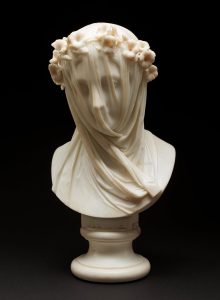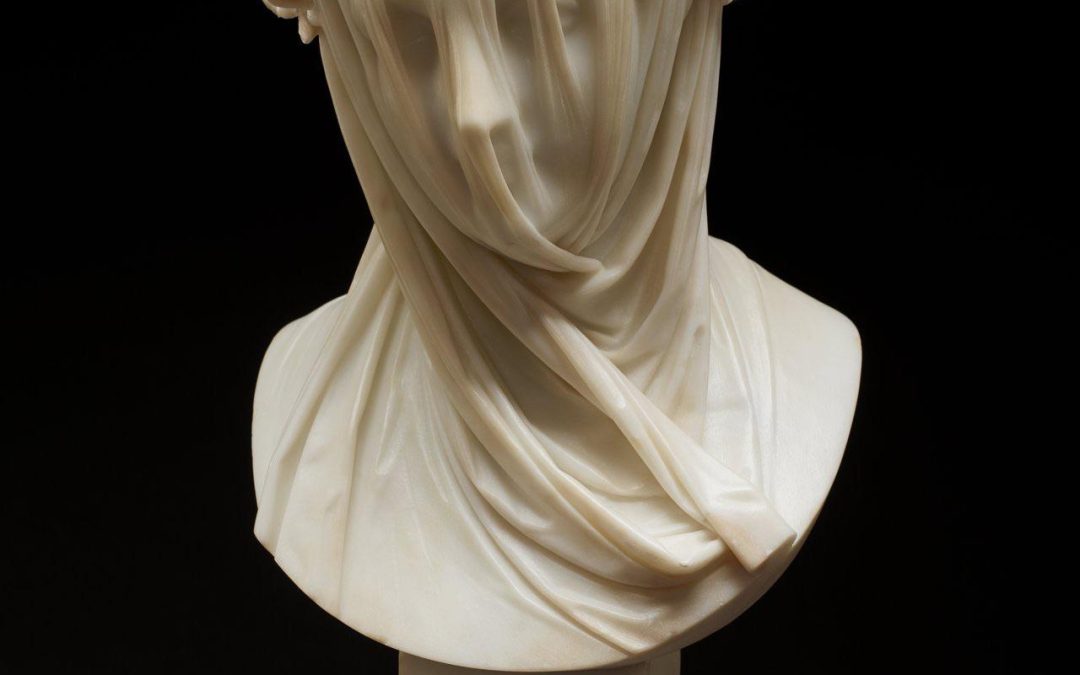 Raffaelo Monti (Italian), “Veiled Lady,” marble, 1860. A bust subsequent to his famous full-figure sculpture “Veiled Vestal,” seen in the 2005 film of “Pride and Prejudice.” Why did he return to the same subject? I suspect he wasn’t satisfied with his first attempt. How does one convey translucency in solid rock? Granite and marble can have a shallow translucent quality to the surfaces of the materials, but nothing like what this sculptor achieved. He found an enchanting balance between the folds of fabric and the contours of the face revealed beneath. Much is said of the surface finish, how he polished the highlights and left the veil more textured to diffuse the light. Sure, the surface treatment matters. To me, though, the design is essential. Texture does not create form. Where did he choose to carve the facial features versus where he allowed the drapery to emerge? In the prior work, the veil concealed both eyes, but here he allows one eye to engage the viewer. Now, it’s personal.
Raffaelo Monti (Italian), “Veiled Lady,” marble, 1860. A bust subsequent to his famous full-figure sculpture “Veiled Vestal,” seen in the 2005 film of “Pride and Prejudice.” Why did he return to the same subject? I suspect he wasn’t satisfied with his first attempt. How does one convey translucency in solid rock? Granite and marble can have a shallow translucent quality to the surfaces of the materials, but nothing like what this sculptor achieved. He found an enchanting balance between the folds of fabric and the contours of the face revealed beneath. Much is said of the surface finish, how he polished the highlights and left the veil more textured to diffuse the light. Sure, the surface treatment matters. To me, though, the design is essential. Texture does not create form. Where did he choose to carve the facial features versus where he allowed the drapery to emerge? In the prior work, the veil concealed both eyes, but here he allows one eye to engage the viewer. Now, it’s personal.

